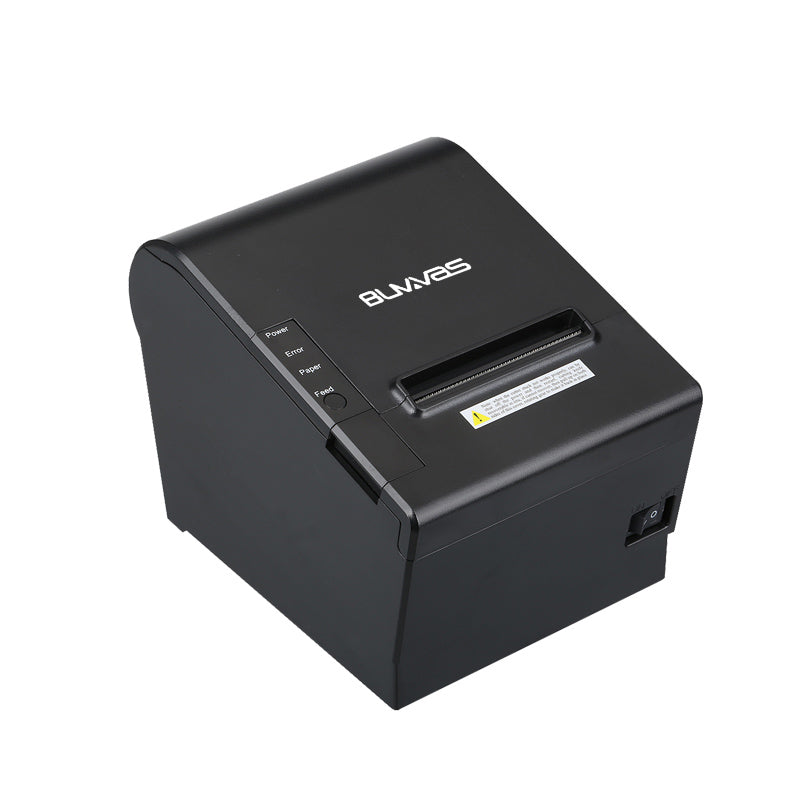
Thermal Printer vs Dot Matrix for Billing: What Supermarkets Should Choose in 2025
Share
Thermal Printers vs Dot Matrix: What’s Best for Supermarket Billing in 2025?
In the fast-paced retail world, especially in supermarkets, efficient and accurate billing is essential. With the rise of technology in 2025, businesses are reevaluating their billing hardware. The common dilemma: thermal printer vs dot matrix for billing.
This blog explores both printing technologies in depth, comparing their performance, maintenance needs, cost-efficiency, and suitability for modern supermarket environments.
Key Focus Areas:
- Print quality and speed
- Cost (initial and operational)
- Maintenance and durability
- Noise levels
- Use cases for each printer type
- Environmental impact
- Integration with modern billing software
- Long-term reliability
What is a Dot Matrix Printer?
A dot matrix printer is an impact printer that uses a series of small pins and an ink ribbon to produce characters or graphics on paper. Though it’s a legacy technology, it's still used in certain businesses for multi-part forms or duplicate receipts.
Pros:
- Can print multi-copy documents (carbon copies)
- Inexpensive to maintain (ribbons are cheaper than thermal rolls)
- Durable in extreme conditions
Cons:
- Noisy while printing
- Slower print speed
- Bulky design
- Low-resolution prints
- Less compatible with modern POS systems
What is a Thermal Printer?
A thermal printer uses heat-sensitive paper and prints without ink or ribbons. It is widely used in modern retail, especially in supermarkets, pharmacies, and restaurants.
Pros:
- Fast and silent printing
- Higher resolution and cleaner output
- No ink or ribbon required
- Compact and sleek design
- Easy paper loading
- Seamless integration with POS systems
Cons:
- Thermal paper can fade over time
- Slightly higher initial cost
- Sensitive to heat and light exposure
Comparison Table: Thermal Printer vs Dot Matrix for Billing
| Feature | Thermal Printer | Dot Matrix Printer |
|---|---|---|
| Print Speed | Very Fast | Slow |
| Noise Level | Silent | Noisy |
| Print Quality | High | Low |
| Maintenance | Low | Moderate |
| Cost (Initial) | Moderate | Low |
| Cost (Operational) | Low | Moderate |
| Multi-copy printing | No | Yes |
| Integration with POS | Excellent | Limited |
| Durability | Moderate | High |
| Best For | Supermarkets, retail, fast billing | Warehouses, carbon copy needs |
Why Supermarkets Prefer Thermal Printers in 2025
Modern supermarkets focus on speed, convenience, and customer experience. Thermal printer vs dot matrix for billing comparisons always favor thermal when:
- Billing queues are long: Thermal printers are much faster.
- Space is limited: They are compact and more aesthetic.
- POS software compatibility matters: Seamless integration.
- Noise needs to be minimized: Silent operation is ideal.
- Cleaner receipts are important: Crisp, readable receipts.
When to Use Dot Matrix Printers Instead
Though fading, dot matrix printers still have a place:
- Printing multi-part invoices or delivery notes
- Harsh environments like warehouses or logistics
- Long-term data storage (dot matrix prints don't fade)
Environmental Impact
Thermal printers:
- Use paper with chemical coating (needs disposal care)
- Less waste overall due to no ribbons or ink
Dot Matrix:
- Ribbons create more waste
- Energy consumption is slightly higher
Long-Term ROI: Thermal Printer vs Dot Matrix for Billing
Investing in thermal printers in 2025 ensures:
- Lower running costs
- Faster service
- Better customer satisfaction
- Modern brand image
Dot matrix may seem cheaper initially, but the reduced speed and outdated print quality can affect overall efficiency.
Final Verdict: Make the Smart Billing Choice
While both printers serve different needs, for modern supermarkets in 2025, the answer is clear:Thermal printers outshine dot matrix printers in almost every aspect of billing.If your supermarket is planning an upgrade, consider thermal printers to streamline operations, reduce costs, and enhance customer experience.

